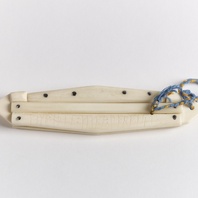
Viking Objects
Reproduction Bone Comb with Runic Inscription
A bone comb with a case with a runic inscription on it. The inscription reads, in translation, “Thorfast made a good comb.” The Vikings had a reputation for looking after their personal hygiene. Combs were an important part of that process, not just for combing your hair but also for removing nits and lice.
Read More
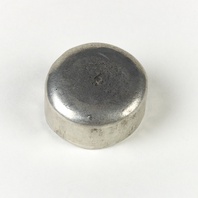
Viking Objects
Reproduction Round Weight
A round lead weight made in an open mould, as shown by the rounded edges of the top which indicate shrinkage in the mould.
Read More
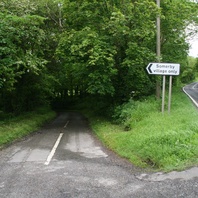
Viking Names
Somerby
Somerby, in the Yarborough Wapentake of Lincolnshire, probably comes from the Old Norse male personal name or byname Sumarliði and the Old Norse element by ‘farm, settlement’. The original byname means ‘the summer traveller’ and is recorded six times in Lincolnshire (all in Lindsey) in the Domesday Book. The spellings in Domesday parallel that of the place-name. Probably identical in origin is Somerby in Leicestershire. Alternatively, the name has been suggested to come from the Scandinavian compound sumar-hlíðar ‘summer slopes’, referring to pastures only used in the summers.
Read More
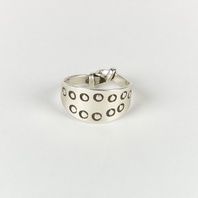
Viking Objects
Reproduction Stamped Finger Ring
A reproduction, stamped, silver ring with knotted ends. Rings with this type of stamped decoration are typical of Scandinavian design during the Viking Age.
Read More
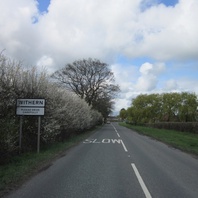
Viking Names
Withern with Stain
The current name combines two originally separate places. Withern shows the influence of Old Norse on an English place-name. Originally, this name was formed from the Old English elements widu ‘wood’ + ærn ‘a house’. However, given the large number of Scandinavian speakers in the area, they pronounced the first element as if it was the cognate Old Norse element viðr, also meaning ‘wood’. The ‘th’ in the modern form preserves this pronunciation difference between the closely-related Old English and Old Norse elements. Stain comes directly from Old Norse steinn ‘stone’ – the place was presumably named after a prominent stone there. Many other place-names in Lincolnshire, like Stainby, Stainfield and Stainton, also contain this word as their first element. Elsewhere in England, such names tend to be spelled ‘Stan-‘, like the very common Stanton, which is the same name but deriving its first element from Old English stān ‘stone’.
Read More
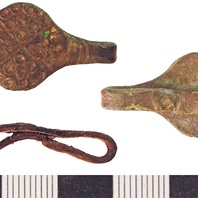
Viking Objects
Imitation Finger Ring (NLM-D675CA)
This finger ring bears stamped decoration imitating the Scandinavian ring and dot pattern which is bordered by incised crossing diagonals of a saltire. The ring- and dot-style of decoration was briefly adopted by inhabitants of Anglo-Saxon settlements such as Cottam in Yorkshire and Flixborough in Lincolnshire.
Read More
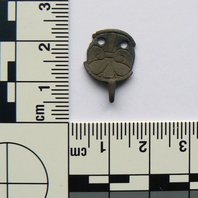
Viking Objects
Hooked Tag (PUBLIC-6847A6)
This hooked tag is constructed from a circular plate and single hook. The decoration features a trefoil with fillet design on the front probably influenced by the Ringerike style.
Read More
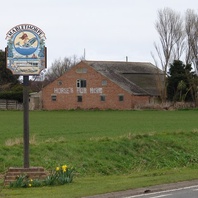
Viking Names
Mablethorpe
Marblethorpe, in the Calceworth Wapentake of Lincolnshire, comes from a likely Continental Germanic male personal name Malbert and Old Norse þorp ‘a secondary settlement, a dependent outlying farmstead or hamlet’.
Read More

Viking Names
Gunngifu
Gunngifu is a postulated Anglo-Scandinavian hybrid female personal name formed from the very common Old Norse element Gunn- from gunnr, guðr ‘battle’ combined with the Old English element gifu ‘gift’. There is a possible attestation of the name in a medieval document from Lincolnshire.
Read More

Viking Names
Scartho
Scartho, in the Bradley Wapentake of Lincolnshire, is a difficult name. The second element is clearly Old Norse haugr ‘a hill, a mound’. The first element, however, has been the subject of much discussion. It has been suggested that the first element is the Old Norse male personal name Skarði or the Old Norse element skarð ‘an opening, an open place in the edge of something, a gap, a mountain pass’. Since the area is now built up, it is nearly impossible to determine the exact topography of the place. It may be pointed out that there are patches of glacial sand and gravel and alluvium at the top of the hill. It has also been suggested based on forms of the name in Scarf- that the first element is Old Norse skarfr ‘a cormorant’, but these spellings occur in only one source. On balance, skarð provide an acceptable first element, but twentieth-century development makes certainty impossible.
Read More
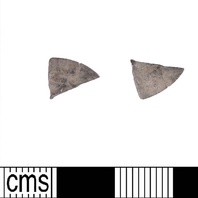
Viking Objects
Arabic Dirham Fragment (LIN-5F318A)
Fragment of an Early Medieval Arabic dirham, probably dating between the eighth-ninth centuries. The fragment appears to have been cut down into a smaller module. The fact that it may have been cut suggests that it was used as part of a bullion transaction in line with the dual bullion-monetary economy established by the Vikings in England. The circulation of Arabic dirhams is generally attributed to Viking activities and this example’s proximity to the winter camp of Torksey likely connects the dirham with the activities of its inhabitants. Arabic coins are especially useful for dating sites, because they carry the date when they were minted. This permits precise dating where the part of the coin with the date survives, whereas European coins can only be dated to the reign of the ruler depicted on them. In western descriptions of these coins, the Arabic dates found on the coins are usually listed in square brackets, as above, and the European equivalent is listed after it. This coin is a product of the Abbasid Caliphate which was ruled from its capital in Baghdad. The Abbasid Caliphate was at its greatest extent c.850 CE, occupying lands from Morocco in the west to Afghanistan in the east.
